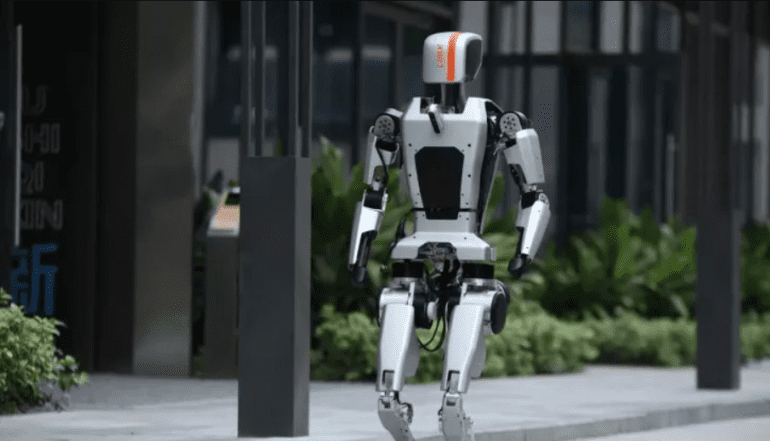- The emergence of ChatGPT-like AI is revolutionizing humanoid robot development in China.
- Generative AI enhances machines’ ability to understand and interact with their environment.
- Local companies like Baidu are spearheading AI integration despite ChatGPT’s unavailability.
- LimX Dynamics COO notes AI’s acceleration of research, shortening robot development timelines.
- Prominent entities like OpenAI, Tesla, and BYD are actively investing in humanoid robotics startups.
- Chinese government endorsement underscores strategic significance of robotic innovation.
- Mechanical limitations remain a challenge for wholesale replacement of human labor.
- Startups like Fastra aim to democratize access to robotics through cost-efficient production.
- Generative AI accelerates pharmaceutical research, optimizing costs and expediting drug discovery.
Main AI News:
The emergence of ChatGPT-like artificial intelligence is revolutionizing the landscape of humanoid robot development in China, a nation renowned for its vast manufacturing capabilities. While AI itself has been a longstanding presence, the advent of technologies akin to OpenAI’s ChatGPT has imbued AI with a remarkable capacity to comprehend and generate content in a manner eerily reminiscent of human cognition. Although not yet officially available in China, indigenous companies such as Baidu have unveiled comparable chatbots and AI models, signaling a burgeoning trend toward human-like AI integration within the nation’s technological fabric.
According to Li Zhang, Chief Operating Officer of LimX Dynamics, a Shenzhen-based startup, the fusion of generative AI with robotics holds immense promise in enhancing machines’ ability to understand and interact with their surroundings. Zhang, reflecting on his experience at LimX, noted a significant acceleration in the company’s research and development endeavors following the adoption of AI-driven tools. Initially projecting a protracted timeline of eight to ten years for the development of a humanoid robot versatile enough to transition seamlessly from factory floors to household settings, Zhang now envisions certain applications materializing within a more condensed timeframe of five to seven years.
The surge of interest in humanoid robotics is palpable across the corporate landscape, with prominent entities such as OpenAI and Tesla actively endorsing startups specializing in this domain. Chinese conglomerates like BYD have also entered the fray, exemplified by their investment in Shanghai-based Agibot. Moreover, the endorsement of such initiatives by the Chinese government, underscored by President Xi Jinping’s public encounter with a humanoid robot developed by Fourier Intelligence, underscores the strategic significance accorded to robotic innovation within the national agenda.
Yet, as the trajectory toward integrating humanoid robots into everyday life accelerates, the implications for human employment warrant careful consideration. Despite the strides made in AI capabilities, mechanical constraints remain a formidable impediment to the wholesale replacement of human labor. Eric Xia, a partner at Future Capital, emphasizes that while generative AI augments task planning for humanoid robots, fundamental challenges persist in replicating the dexterity and adaptability inherent to human workers.
Looking ahead, the transition to widespread deployment of factory robots hinges on achieving cost efficiencies that render automation economically viable. Steve Hoffman, Chairman of Founders Space, anticipates a paradigm shift in this regard, citing the emergence of startups like Fastra poised to democratize access to robotic technology. By leveraging generative AI to streamline production processes, these startups aspire to drive down costs, potentially enabling mass adoption of robotics across various industries.
Beyond the realm of manufacturing, the intersection of generative AI and pharmaceutical research holds promise for cost optimization and accelerated drug discovery. Alex Zhavoronkov, CEO of Insilico Medicine, underscores AI’s role in mitigating research expenses by minimizing the number of failed experiments. By harnessing AI-generated insights, companies like Insilico Medicine aim to expedite the drug development pipeline, as evidenced by their recent progress toward phase 2 clinical trials for an AI-generated drug.
Conclusion:
The integration of generative AI with robotics heralds a transformative wave in technological innovation, particularly in China’s tech landscape. With AI-driven advancements and entrepreneurial endeavors converging, industries ranging from manufacturing to healthcare stand poised for significant disruption and evolution. This dynamic landscape underscores the imperative for businesses to adapt and capitalize on the opportunities presented by this paradigm shift in human-machine interaction.

